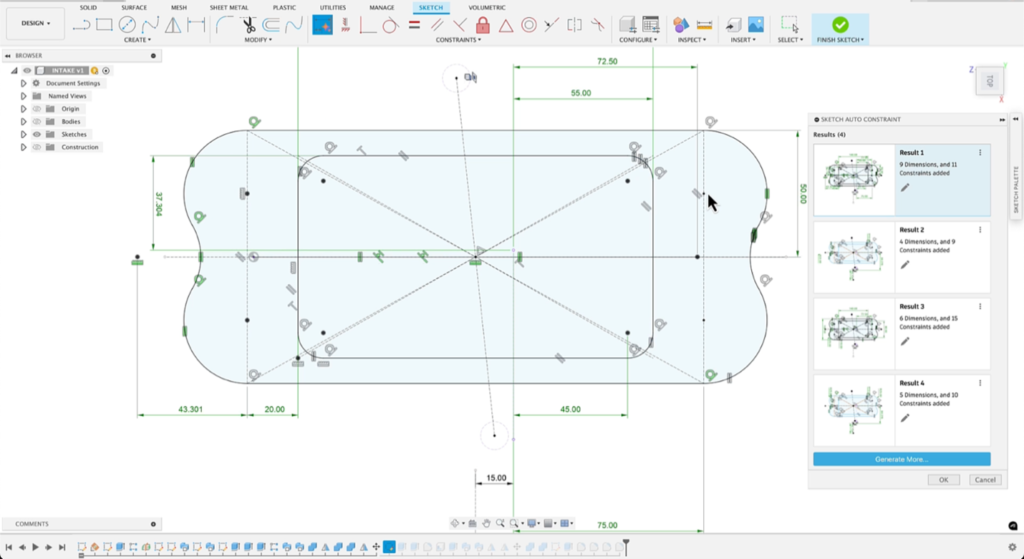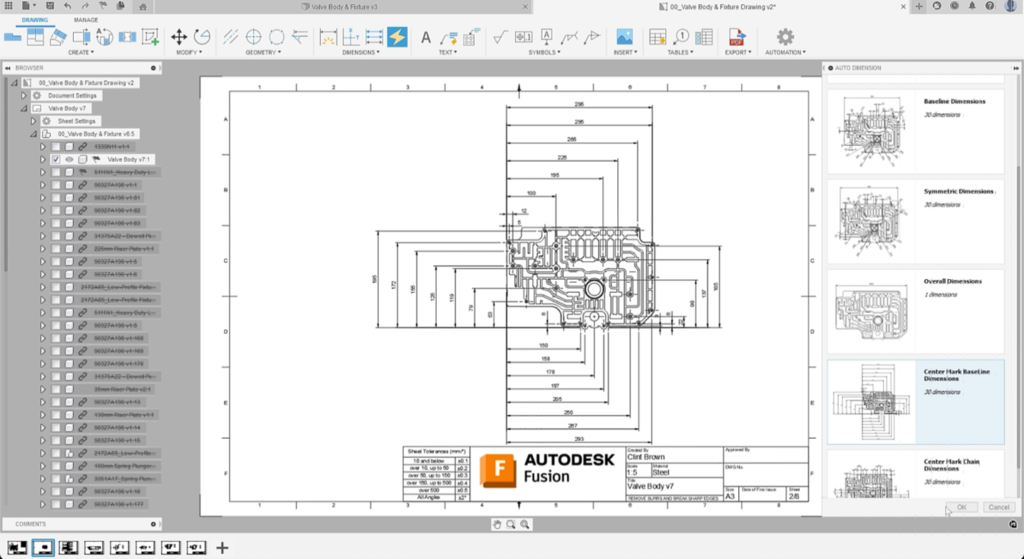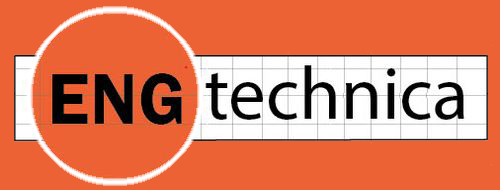
Autodesk has announced the integration of new AI-driven tools in Fusion and Alias. In Fusion, the AI is to help create models faster as well as automatically dimension to make fully annotated drawings from those models. In Alias, AI is to provide automotive styling variations.
The new AutoConstrain, which ought to take all the angst out of creating a profile, the first step in creating a solid model shape, will on its own apply all the constraints needed, whether they make lines parallel or perpendicular, suggest a dimension… whatever.
Users can accept or modify the suggested constraints. By inferring constraints, Fusion is one step closer to fully automated design – though there is a long road ahead.
Also announced for Autodesk Fusion was the automation of drawing creation. In theory, users can practically push a button and have all drawing views automatically created, complete with dimensions. The tool recognizes critical views like top, side and front and is supposed to even have the ability to make detail, section and isometric views, we are told. As with manually created views, all automatic views maintain consistency with the 3D model, adjusting the drawings in real-time as the design evolves.

The Form Explorer (formerly BlankAI) in Autodesk Alias uses AI to create automotive exteriors using surface modeling. This uses technology acquired in BlankAI, which was announced at last year’s AU. In addition, to being able to judge the aesthetic qualities of their design, taking into account curvature and surface continuity, the shape could be useful for CFD simulation, but not much else, as the shape is only skin-deep, a zero-thickness surface model.
The new API in Autodesk Fusion 360 expands the software’s capabilities by allowing developers to create custom applications, plugins, and automations tailored to specific needs. It supports a broader range of integrations, enabling users to connect Fusion 360 with third-party systems, tools, or databases, enhancing interoperability across platforms. This API facilitates automating tasks like part generation, file processing, or simulation, reducing manual effort and increasing efficiency.

